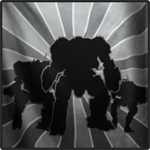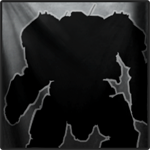 SaltBeef, on 09 November 2014 - 05:30 AM, said:
SaltBeef, on 09 November 2014 - 05:30 AM, said:
All Should be burst except LBX models. Lore wise.
 Ryoken, on 09 November 2014 - 09:22 AM, said:
Ryoken, on 09 November 2014 - 09:22 AM, said:
Actually even LBX models are burst firing cannons just that every shell will fall into several clusters at a certain distance from the target. This is why the number of LBX clusters hitting a target mech is not modified by range. So the LBX autocannons as we have them now are wrong in two ways:
1) they fire a single shot, where it should be a burst
2) the fired shot immidiately clusters instead of clustering at a certain distance to the target mech, making them useless at range
 SaltBeef, on 09 November 2014 - 10:46 AM, said:
SaltBeef, on 09 November 2014 - 10:46 AM, said:
I thought the Lbx was a single shell that fragmented separated on the way to target not a buckshot weapon. In this game it is cannister buckshot.
The current behavior of the LB-X cluster round in MWO is correct with regard to how it is consistently described in BattleTech - that is, the LB-X ACs have always been described as behaving like "anti-BattleMech shotguns", mirroring both
shotshells and the canister rounds used by modern MBTs (like the
M1028 Canister round used by the Abrams) in that they fragment as muzzle-exit.
TRO 2750 (in which the LB-X was originally introduced) uses the shotgun comparison (on pg. 08).
"In addition to firing the standard Dual-Purpose Armor-Defeating Rounds,
the weapon may also fire a special Cluster Round that acts much like an anti-'Mech shotgun. After being fired, the round breaks up into several smaller submunitions."
Use of the phrase "after being fired" rather than something to the effect of "prior to impact" indicates that the fragmentation/break-up phase happens early in the firing cycle (e.g. "at muzzle exit").
The shotgun analogy is also used in the CBT Master Rules (pg. 132), as follows:
"
The LB-X autocannon can fire cluster munitions, which act like an anti-BattleMech shotgun in combat. When fired, the ammunition fragments into several smaller submunitions. This improves the attacker’s chances of striking a critical location but disperses total damage by spreading hits over the target area rather than concentrating the damage on one location. Cluster munitions can be used only in LB-X autocannon, not in standard or Ultra autocannon types."
Note that the CBTMR description specifically says, "
When fired, the ammunition fragments into several smaller submunitions" - indicating that the shell fragments at muzzle exit, much like its real-world counterpart (the aforementioned M1028).
It's also supported, albeit indirectly, by
TechManual (pg. 207):
"An improvement on the common autocannon intended to expand the weapon’s role into anti-vehicle and anti-infantry work, the LB-X makes use of light, heat-dissipating alloys to reduce its weight and thermal buildup. These materials, coupled with a smooth-bore, multi-munition feed mechanism, make the LB more expensive than standard autocannons. However, the slight range increase and
the ability to switch between standard-style bursts and explosive cluster munitions - both specially developed for this weapon system - more than mitigate this higher cost."
LB-X ACs are also specifically described as smoothbore weapons ("These materials, coupled with a
smooth-bore, multi-munition feed mechanism, make the LB more expensive than standard autocannons."), a descriptor that is used in such a way as to indicate contrast with other AC types... and one which is only significant or relevant specifically because
rifled barrels, due to the effect rifling has on spread, are generally unsuitable for firing shotshells, an issue that would not exist with Shrapnel shells.
Most recently, the "LB-X as shotgun" motif is supported directly by
Era Report: 2750 (pg. 98).
"A highly advanced weapon system,
the LB-X could switch between ammunition like standard autocannon rounds or fire a shotgun style round that would split into hundreds of explosive sub-munitions. This style of submunition was particularly effective against vehicles, but also proved effective for short-range anti-aircraft flak, and for dispersing attacking infantry."
Moreover, many (if not all) of the novels in which they appear explicitly refer to LB-X ACs and their specialty shells as "'Mech-sized shotguns", "glorified shotguns", and so on...
"Natasha's laugh survived computer modulation intact. "Of course. Would you prefer that they use a strategy that makes them comfortable or uncomfortable?"
"Point taken.
This LBX autocannon has Cluster loads."
"Shotgun shells. It'll sand all the armor off a foe. Once you've softened him up, your lasers ought to cut him to ribbons."
Phelan nodded to himself and studied the auxiliary monitor. "Gauss rifle in my left arm?"
"Great weapon. It uses magnetic currents to launch a ball of ferrous metal about the diameter of a melon. Generates next to no heat and packs one hell of a wallop. The only problem is that its power requirements are fairly heavy. If you try to shoot it and the lasers at the same time, the computer will have to cycle and allocate power, so it will take a bit longer to get your salvo off."" - Natasha Kerensky & Phelan Kell,
Blood Legacy, chapter 19
"Shunting plasma flow from the fusion engine into his jump jet reaction chambers, Doles guided the
Emperor into a ninety-meter spinning flight that landed him directly behind the
Marauder. Realizing his error the Periphery warrior tried to turn into the attack, but too late. Lasers flared ruby energy into its already-weakened rear torso and sides, evaporating any remaining armor it might have claimed and then carving deep into internal support structure.
The autocannon hammered its shotgun-like ammunition into the breaches, each fragmenting piece ricocheting deeper than the one before in search of critical components." - battle between Colonel Warner Doles'
Emperor (firing a LB 10-X) and a Taurian Concordat
Marauder,
The Killing Fields, chapter 36
"As he ran, Jake saw Petra bring her
Stormcrow forward and to the right, closing in on the second
Avatar to bring her autocannon into play. Her opponent took a few steps back and launched a double-salvo of LRMs from its shoulders, following it up with
a shotgun-like blast from its right-arm autocannon. Her speed made her a difficult enough target that the cannon shot went wide, but her
Stormcrow weathered a spread of twenty long-range missiles before she raised her 'Mech's left arm and let rip with the autocannon." - battle between MechWarrior Petra's
Ryoken B and a DCMS
Avatar Prime firing a LB 10-X,
Test of Vengeance, chapter 13
As such, PGI's "shotgun-esque" implementation of the LB-X cluster rounds is in fact "correct" in that it is true to the descriptions and portrayal of the weapon's descriptions & portrayals in the source material, and reimplementing them as proximity- or timer-detonated
Shrapnel shells would be antithetical to that the LB-X is supposed to be.
With regard to the LB-X's ability to utilize its improved effective range while firing cluster rounds:
Real-world shotguns can control the degree of spread over distance through the use of a
choke system, with variable-setting chokes (see
here &
here) having been in real-world use for the better part of a century; the LB-X ACs' having servo-driven adjustable chokes slaved to the 'Mech's targeting system (such that it can be set to "fully-open" when firing normal rounds, and set to optimize spread as a function of range-to-target & target size when firing cluster rounds) is a plausible explanation that (unlike the proximity-detonation proposal) also maintains the long-established character of the LB-X as "an anti-BattleMech shotgun".
Moreover, LB-X cluster rounds should not be conflated with the "Flan rounds" & "Flechette rounds" fired by Standard ACs (and, later, Light ACs).
"Despite having been a proven technology in ages past, flak autocannon ammunition remains uncommon today. Intended to deal with airborne combatants such as VTOLs and fighters, this ammunition uses proximity charges to detonate in mid-air. While potent against fast-moving targets susceptible to foreign object damage (FOD), flak ammo is less effective against slower-moving targets on the ground because the charges scatter their shrapnel too far and too quickly to benefit from the target’s mobility." -
Tactical Operations, pg. 352
"Flechette rounds are similar to LB-X cluster rounds, except they release a shower of metal slivers instead of shotgun-like flak. Designed to combat unarmored infantry, these rounds are ineffective against armored targets." -
Classic BattleTech Master Rules (Revised), pg. 133
Only the Flak rounds used by Standard ACs (along with the Flechette artillery shells used only by Artillery Cannons & the Airburst shells used only by 'Mech Mortars) are described as using proximity-detonators; in fact, the word "proximity" appears in
Total Warfare only in relation to the flight speeds of aerodyne craft (pg. 80) & the Proximity Damage rules (pg. 88) and in
TechManual with regard to wing-in-ground-effect vehicles (on pg. 115), while virtually every rulebook, sourcebook, and novel where the LB-X cluster rounds are mentioned describes them as behaving like shotshells ("When fired, the ammunition fragments into several smaller submunitions." - CBTMRr).
LB-X cluster rounds and Flechette rounds are both described as "shotgun style" & "shotgun-like"
in contrast to the Flak rounds, the LB-X cluster rounds receive an additional to-hit bonus where Flak & Flechette rounds do not, LB-X rounds do not halve their damage against most targets like Flechette & Flak rounds do, and only the LB-X cluster rounds are explicitly stated to not benefit from Targeting Computers & lose the ability to make Aimed Shots.
To summarize, BattleTech canon/lore indicates & supports the following:
- LB-X AC cluster rounds = canister-round/shotshell (fragments at muzzle exit) with explosive submunitions (like bomblets or grenades, rather than simple buckshot/grapeshot)
- Standard/Light AC Flechette rounds = canister-round/shotshell (fragments at muzzle exit) with non-explosive shrapnel
- Standard/Light AC Flak rounds = proximity-detonated shrapnel shell or HE shell with non-explosive shrapnel
Edited by Strum Wealh, 10 November 2014 - 01:09 PM.
 Brody319, on 07 November 2014 - 02:05 PM, said:
Brody319, on 07 November 2014 - 02:05 PM, said:

































